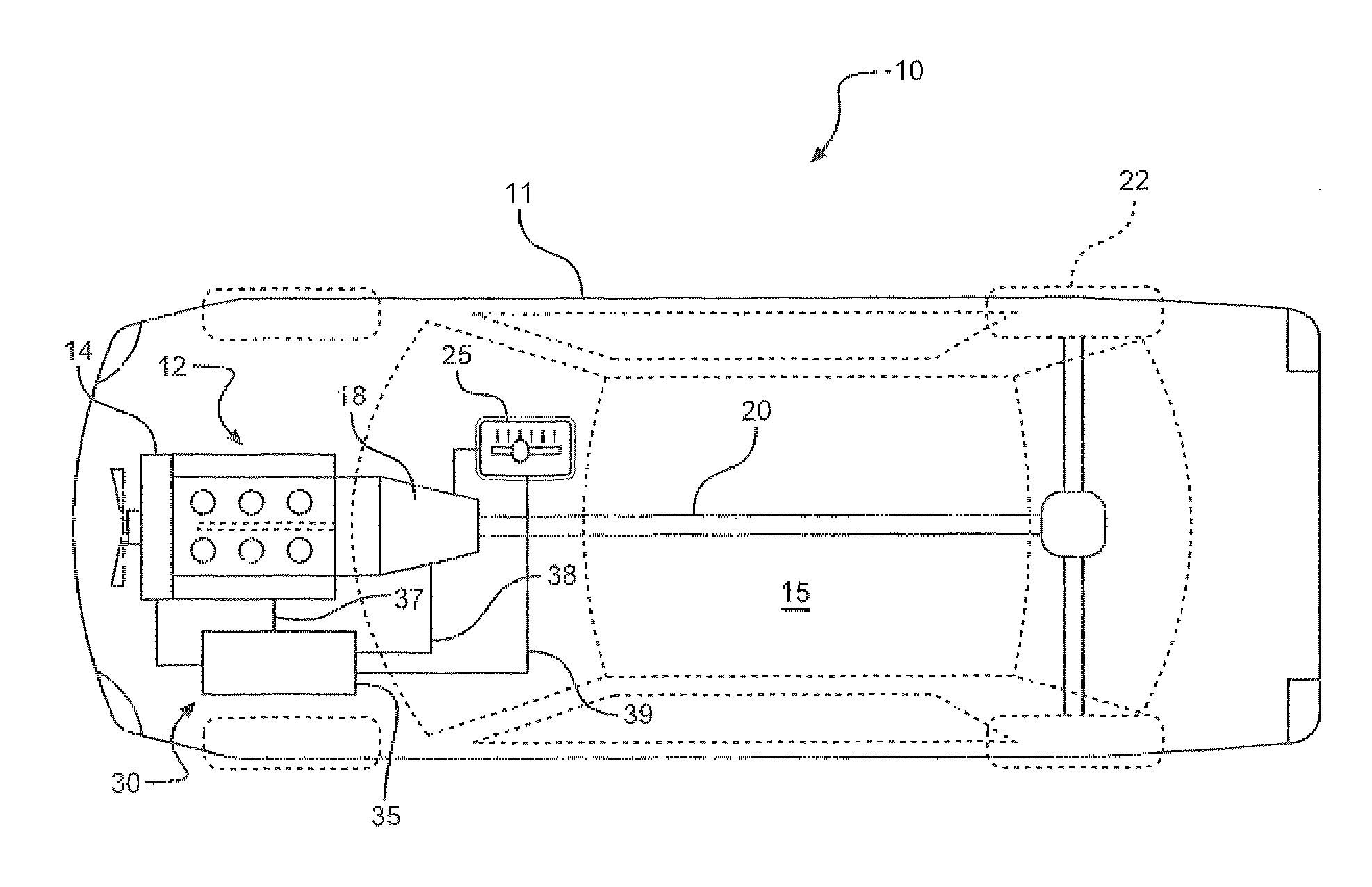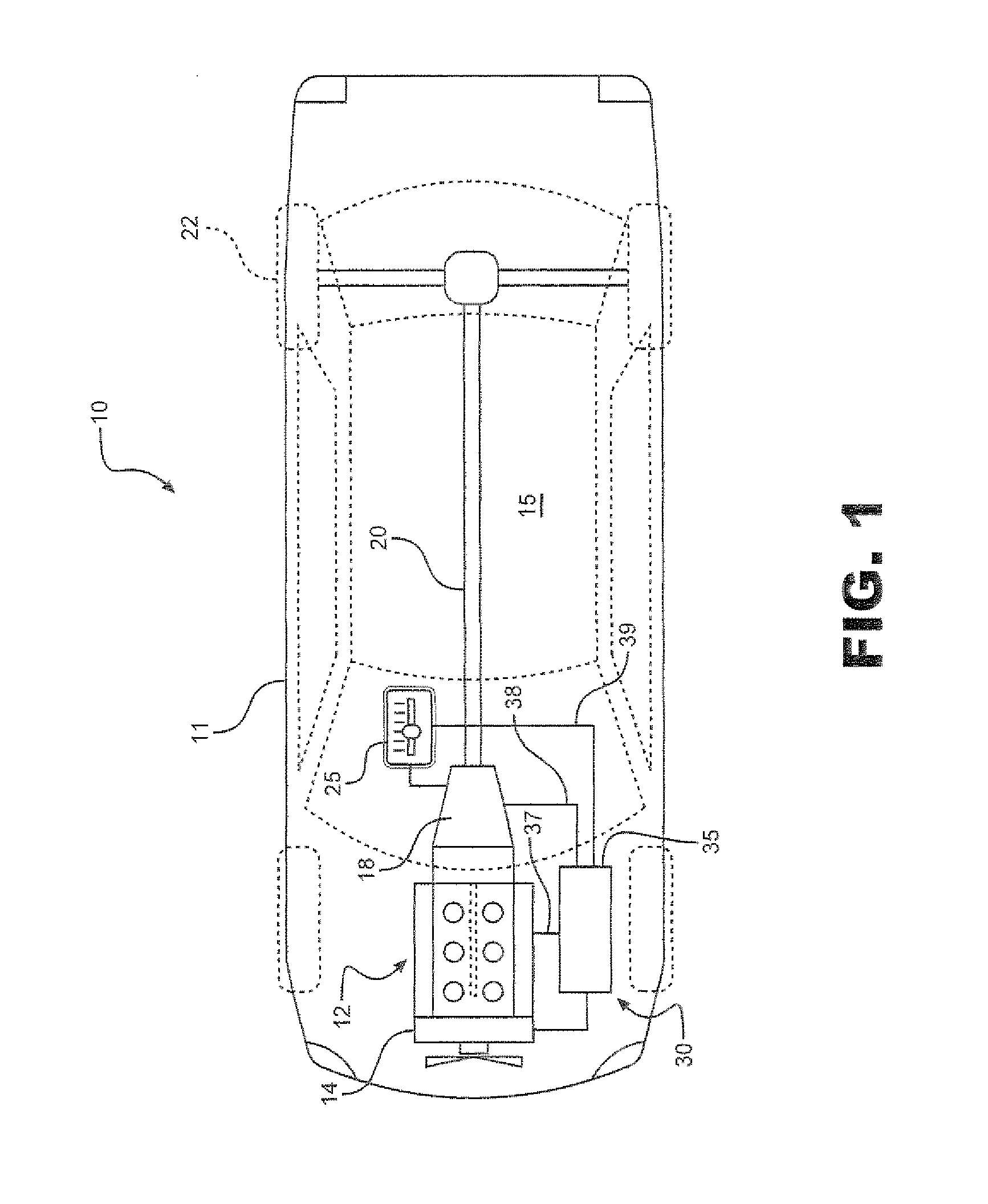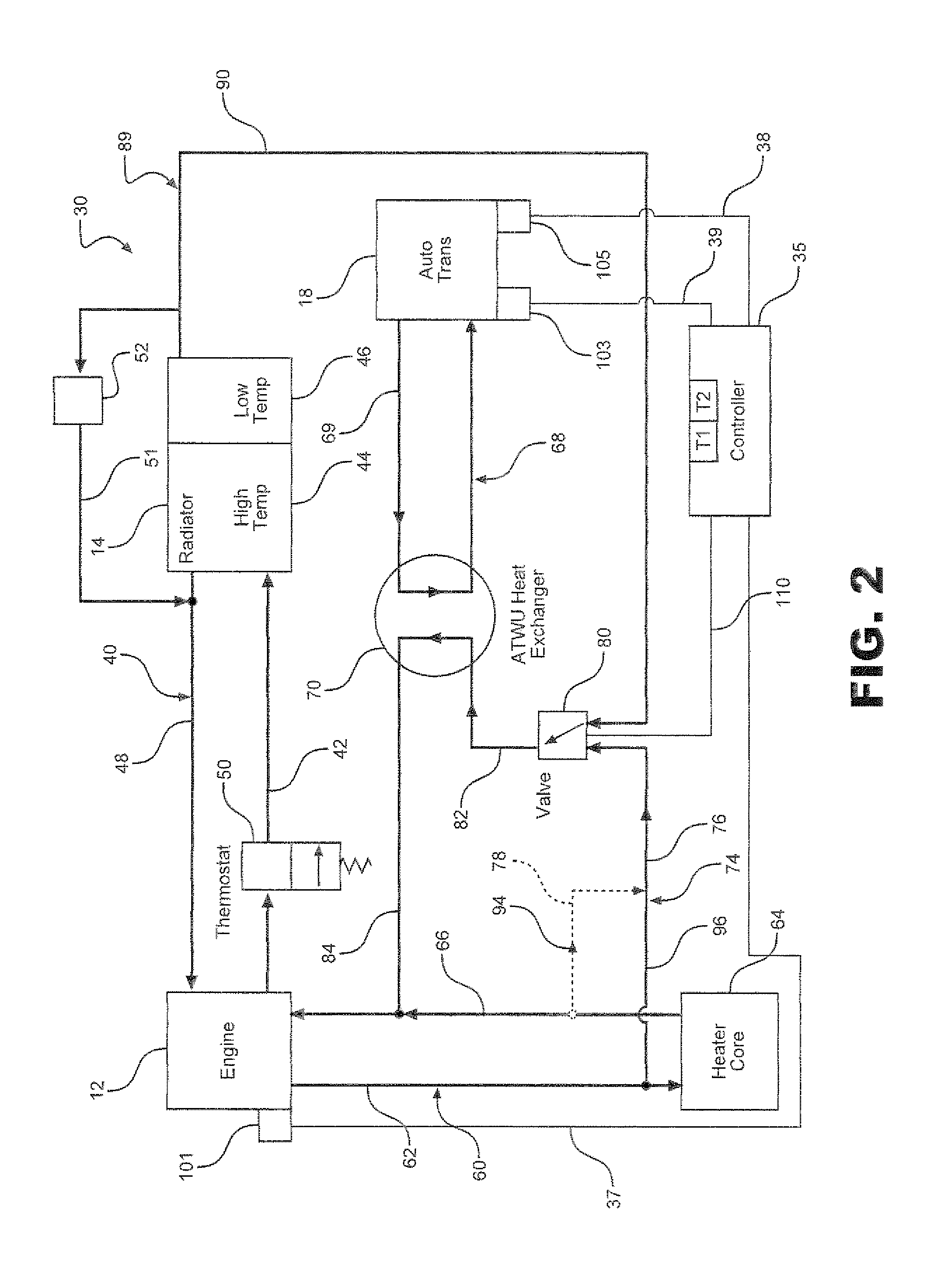Transmission Fluid Warming and Cooling System
a technology of transmission fluid and cooling system, which is applied in the direction of machines/engines, lighting and heating apparatus, machine operation mode, etc., can solve the problems of reduced fuel economy, inacceptable parasitic losses, and the occurrence of most automatic transmissions
- Summary
- Abstract
- Description
- Claims
- Application Information
AI Technical Summary
Benefits of technology
Problems solved by technology
Method used
Image
Examples
second embodiment
[0039]Turning to FIGS. 5-7, there is shown a second preferred embodiment of the invention. Most of the parts of the second preferred embodiment are the same as the first preferred embodiment and like reference numerals are used for like parts. Only the differences between the two embodiments will be discussed here. In the second preferred embodiment, a system 130 has a transmission cooling circuit 189 with a second valve 190 not found in the first preferred embodiment. Second valve 190 is connected to an engine coolant supply line 192. Second valve 190 is controlled by controller 35 through communication line 195 and is adapted to switch flow between a cold-coolant return conduit 198 and coolant line 192. Second valve 190 is positioned to selectively send cold engine coolant flow 199 back to engine12 as in FIGS. 5 and 6, or to send cold engine coolant to valve 80 as in FIG. 7 to place system 130 in a transmission cooling mode. When second valve 190 sends fluid back to engine 12, sys...
first embodiment
[0041]Turning now to FIGS. 11-13, there is shown a fourth preferred embodiment of the invention. Most of the parts of the fourth preferred embodiment are the same as the third preferred embodiment and like reference numerals are used for like parts. Only the differences between the two embodiments will be discussed here. Specifically, valve 190 of the third preferred embodiment has been replaced with valve 290 which is set to either allow or not allow flow from radiator 14 to heat exchanger 70. Additionally, return conduit 198 is not used but rather return line 51 and restriction device 52 from the first embodiment are used. Valves 280 and 290 are closed in FIG. 11 thus placing a system 330 into a heater priority mode. In FIG. 12, system 330 is in an automatic transmission fluid heating mode with a hot engine coolant flow passing through heat exchanger 70 because first valve 280 is open allowing the flow of hot engine coolant from engine 12 through line 76, while valve 290 is set to...
PUM
 Login to View More
Login to View More Abstract
Description
Claims
Application Information
 Login to View More
Login to View More - R&D
- Intellectual Property
- Life Sciences
- Materials
- Tech Scout
- Unparalleled Data Quality
- Higher Quality Content
- 60% Fewer Hallucinations
Browse by: Latest US Patents, China's latest patents, Technical Efficacy Thesaurus, Application Domain, Technology Topic, Popular Technical Reports.
© 2025 PatSnap. All rights reserved.Legal|Privacy policy|Modern Slavery Act Transparency Statement|Sitemap|About US| Contact US: help@patsnap.com



